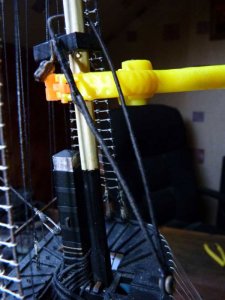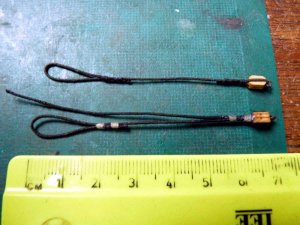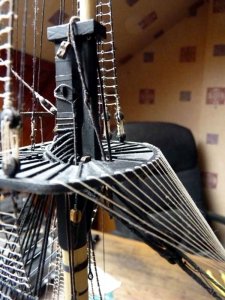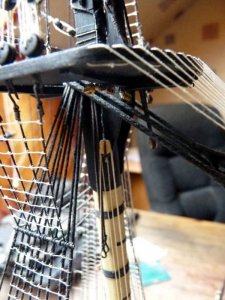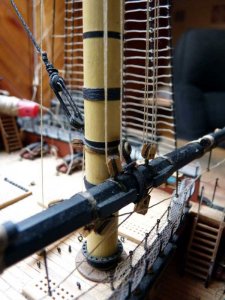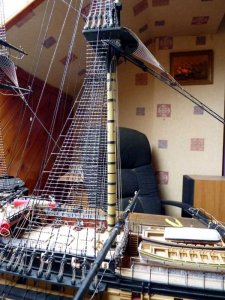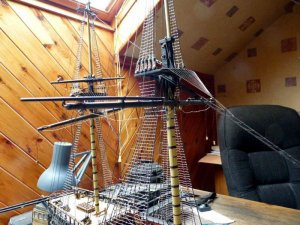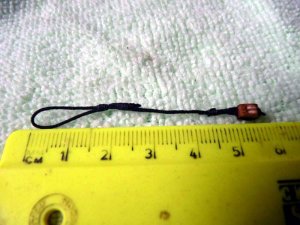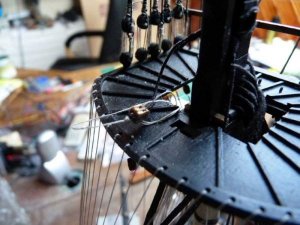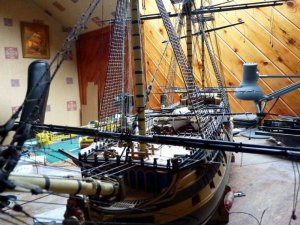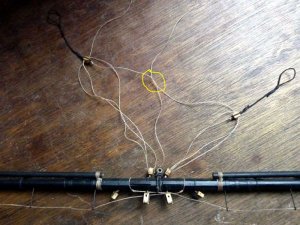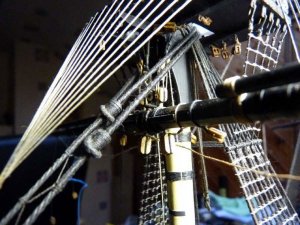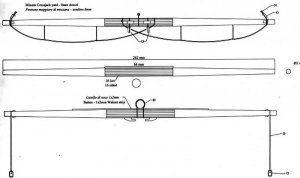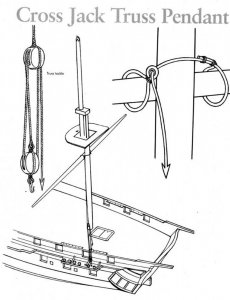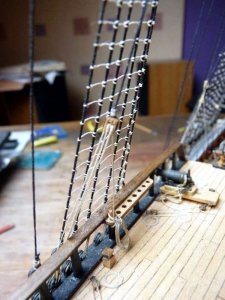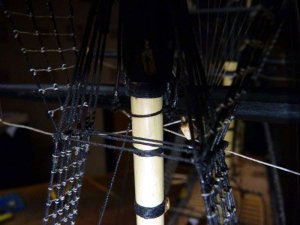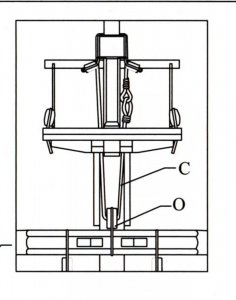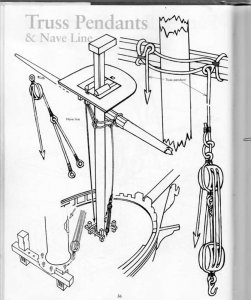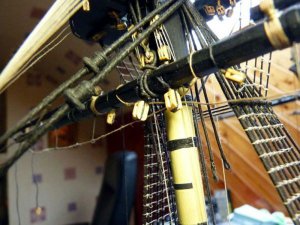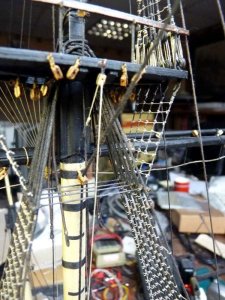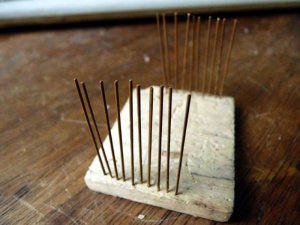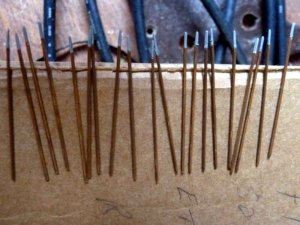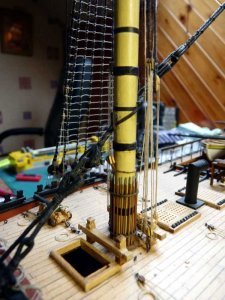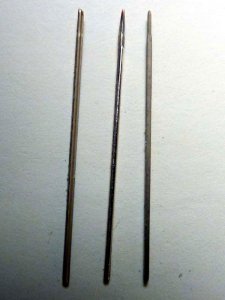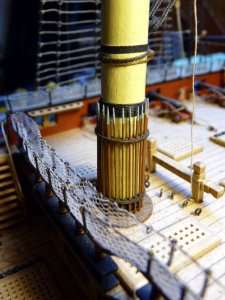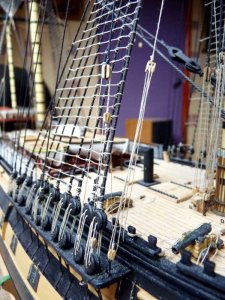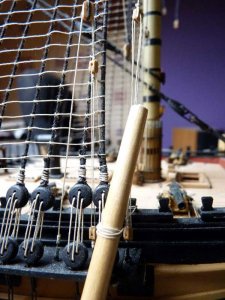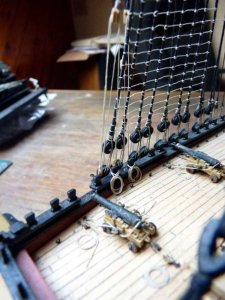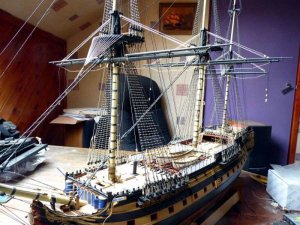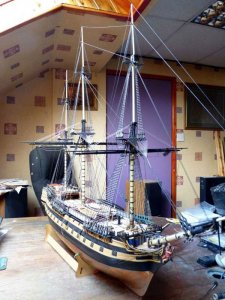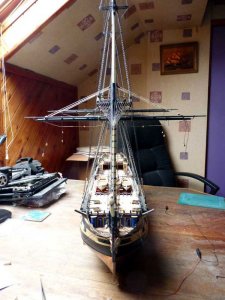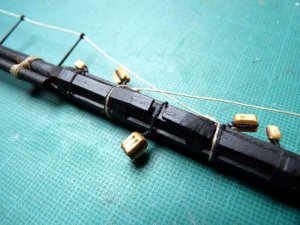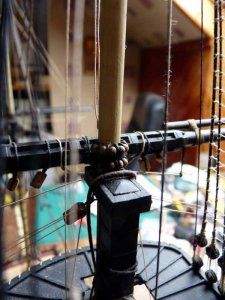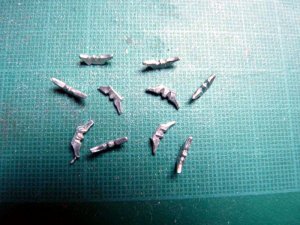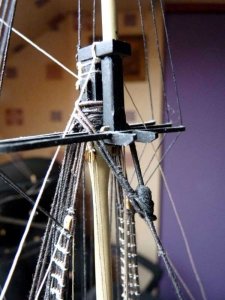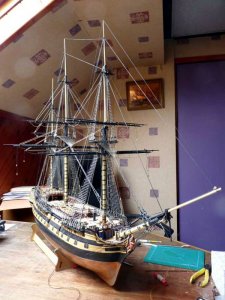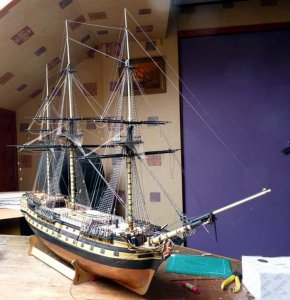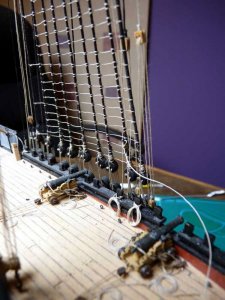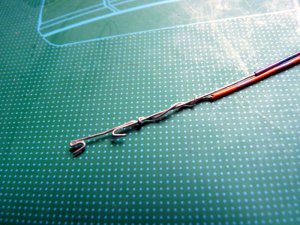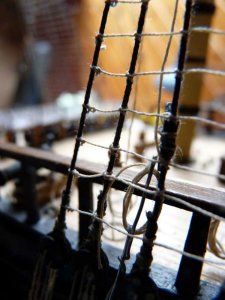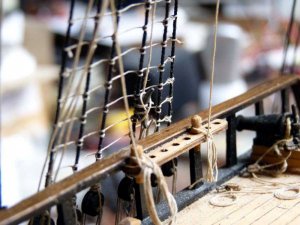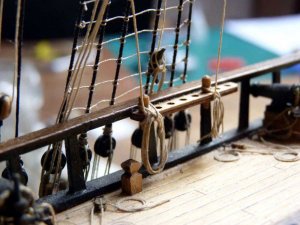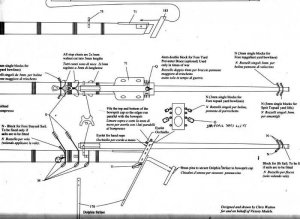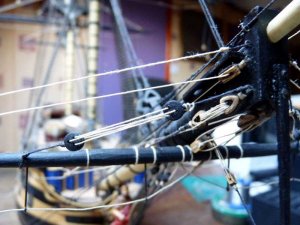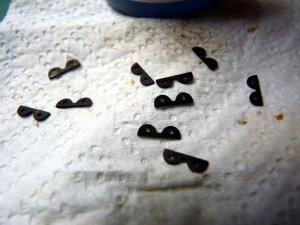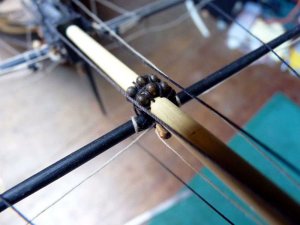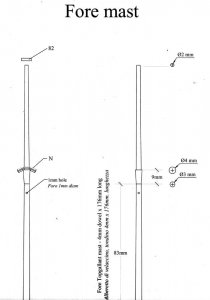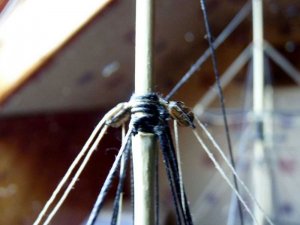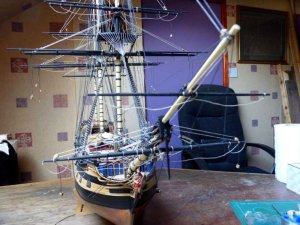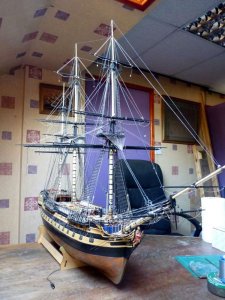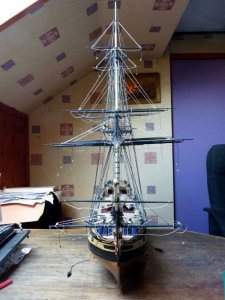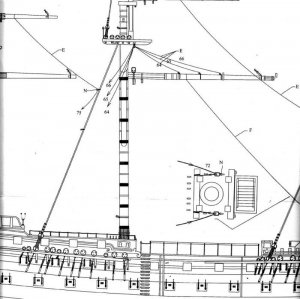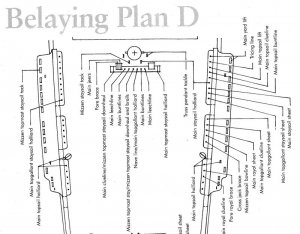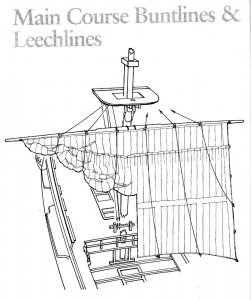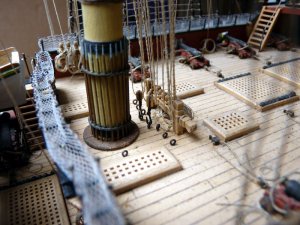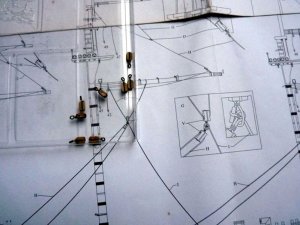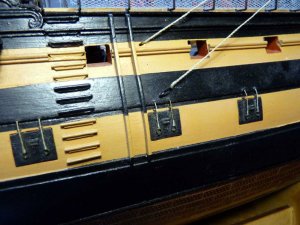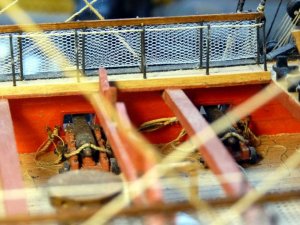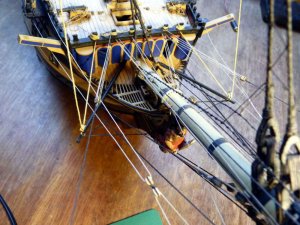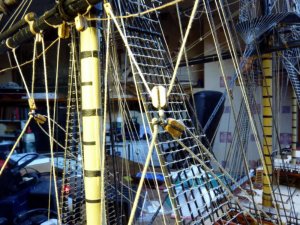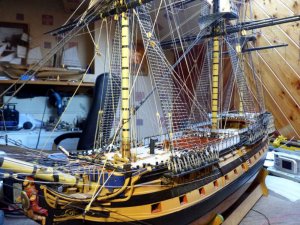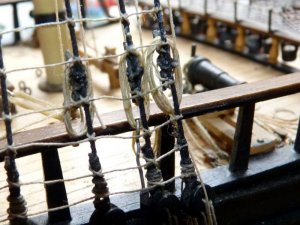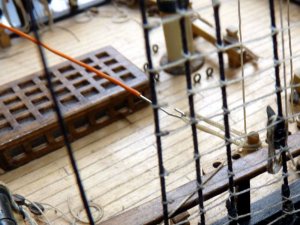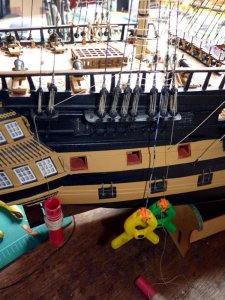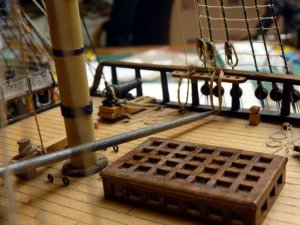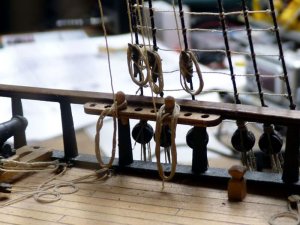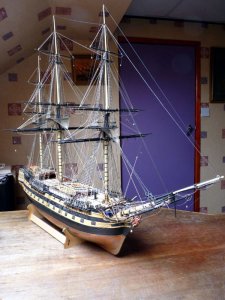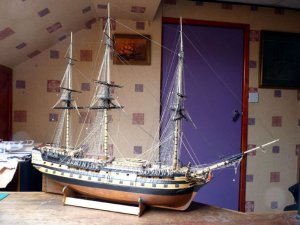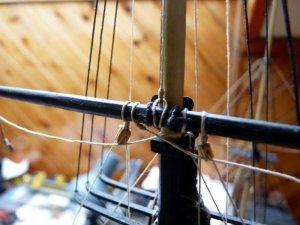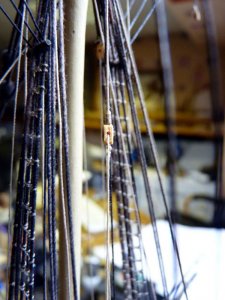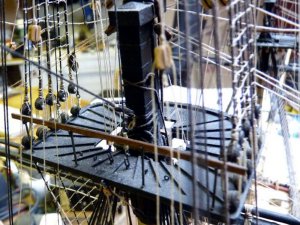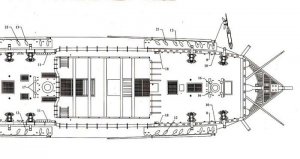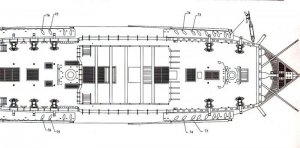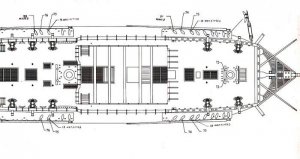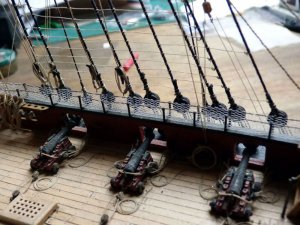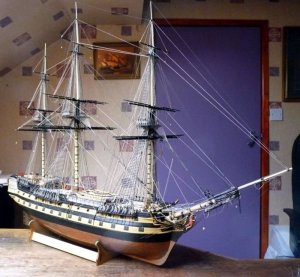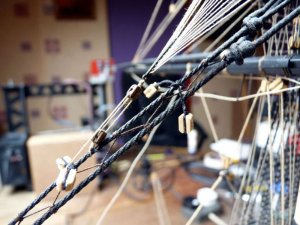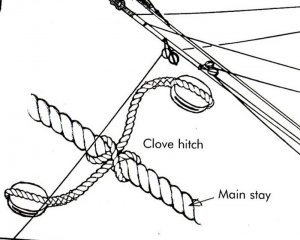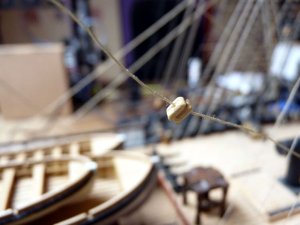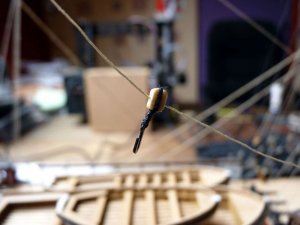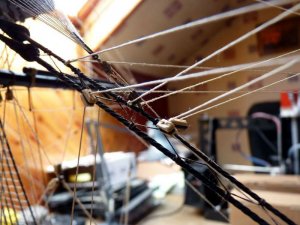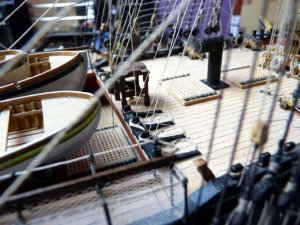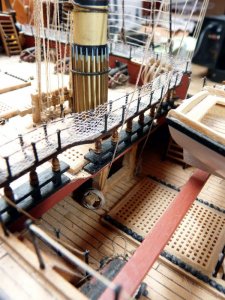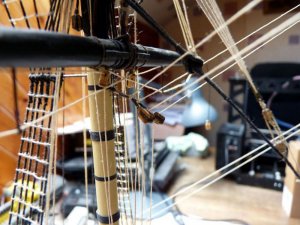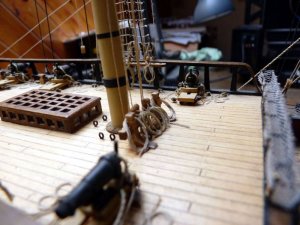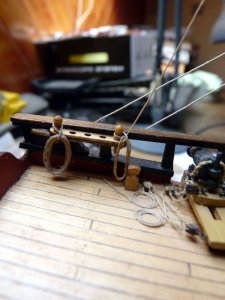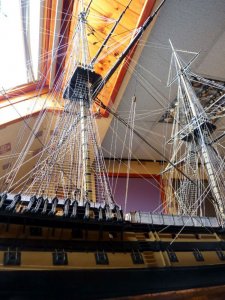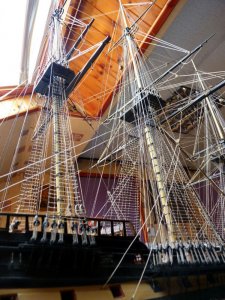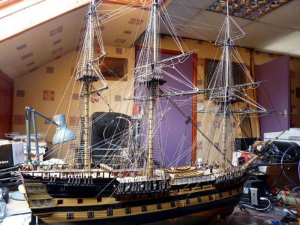This latest log entry has almost as many steps backward as it has forward! I’ll start with the progress and cover what went wrong at the end.
The buntlines and leech lines for the fore course are theoretically straightforward but I was expecting threading the lines through the blocks under the fore top to be a bit of a challenge. It turned out to be easier than I expected. The lines are intended to attach to the sails with wooden toggles. If the sails are taken down (or not fitted) the toggles are pulled back to the blocks on the yards. So, with the lines threaded up to the top and then out to the blocks on the yard, I needed some wooden toggles. These really are tiny and I was looking around for suitable pieces of wood when I spotted some brown sleeved telephone wire. Tying the line round this and then snipping it to length worked fine. The hardest job was taking a picture - this is the best I managed:
PICT_V_8401
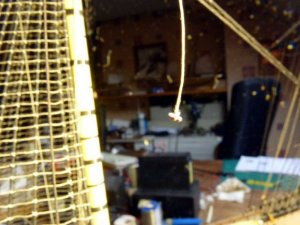
With the toggles fitted, the lines could be pulled back and the toggles keep them from pulling out of the blocks on the yard.
This is how they look:
PICT_V_8402
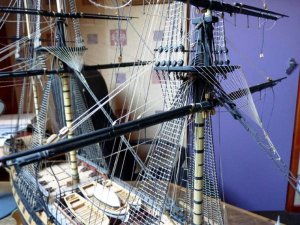
Again not the clearest of pictures but this shows how the lines are routed backwards under the fore top before running down to the timberheads in front of the ship’s boats:
PICT_V_8403
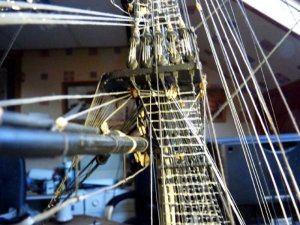
The next picture shows where the lines are made off. Strictly speaking, they shouldn’t be laid on the deck but without the sails, there’s a lot of line to coil up and the coils won’t hang clear of the deck in front of the timberheads. I could hang them over the back but that didn’t look right. I finally decided to leave them there as they would only be like that until the sails were fitted. (That’s my excuse and I’m sticking to it!)
PICT_V_8404
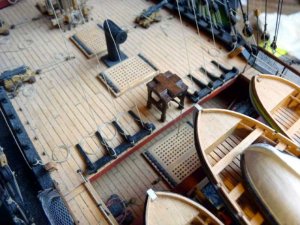
However, looking at the picture, I’ve just realised that the outer coils should have been hung on the rail some time ago!
Time to move on to the main yard. Having abandoned the diagrams on Plan 11 in favour of arrangement shown in Petersson’s diagram, I drilled some more holes in the main bitts (patience - picture coming up later!)
There is only one set of blocks under the main top rather than a set at the front and a set at the rear as under the fore top. That means the lines run down immediately behind the main yard but the arrangement seems fine:
PICT_V_8405
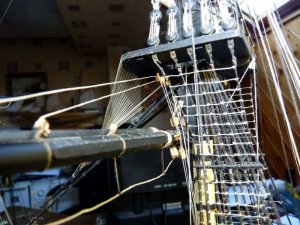
Now this was the challenging part. There are no belaying pins shown in the main bitts but I’d previously drilled three holes and rigged lines to them. In anticipation of possible need for further pins, I’d drilled the outer ones as near to the ends as I could.
This is what it looked like at this point:
PICT_V_8406
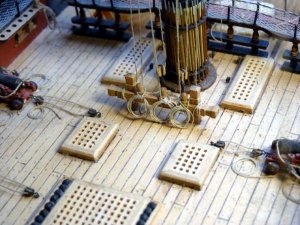
Drilling an extra hole each side would be no problem but two each side was risky. There are three lines each side and the diagram shows two bowlines sharing a pin with the leech line on a separate pin. Three lines on one pin didn’t seem an attractive proposition so I decided to try for two each side.
This was the result:
PICT_V_8407
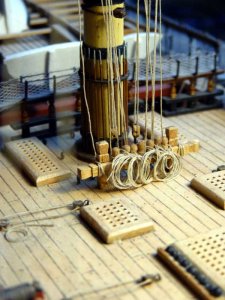
That was a tight squeeze. There isn’t actually enough room between the pins for the lines to drop into the gap. I needed to push them into place with my tweezers!
So what went wrong along the way?
The first thing was that my head-band magnifier got caught under the starboard end of the main yard. The yard survived, but it’s already fully raised so lifting the starboard end meant the port end was going down - despite the lift holding it up. The seizing holding the two blocks to the end of the yard pulled apart.
After removing the old strop, I looped a new length of thread around the yard and then seized a loop round the smaller, lift block leaving a short length of thread through the seizing. I then brought the long end of thread (the length from the reel) up alongside the other two threads and seized round all three creating three loops, one round the lift block, an empty one in the middle and a large one round the yard. I was then able to fit the large block into the middle loop and then pull the large loop tight around the yard. Doing it that way meant that I didn’t have to disturb the rigging of the lifts.
While I was doing this, I noticed something odd. There are two blocks, a large one and a small one, one above the other at the ends of the yards. The lifts on the main yard run (correctly) through the smaller upper blocks but the topsail yard lifts were all run through the lower of the two blocks. As they were rigged after the lifts for the lower yards were correctly rigged, I’m at a loss to explain that one!
That, at first, looked like a major re-rigging job, but as I was slightly shortening the lifts, I decided to try working from top. The lifts are made off around the mast cap. Those yards are in the lowered position so I could raise them to slacken the lifts. I was then able to lift the mast cap and slide the lifts off it. I’d originally formed a noose on the ends of the lifts so once I’d cut the very end of this off, I was able to re-thread the lifts through the correct blocks.
As the lifts were now shorter, that gave me a little bit of spare line to play with but I wanted to keep the tension correct so I replaced the mast cap, wrapped the lift around it and marked the thread where the noose should end. I’d originally seized a small eye around the other leg to form the noose, but in position it was hidden under the mast cap so this time I just tied a couple of half hitches around the other leg. I was then able to lift the mast cap once more and slip the two loops around it.
That wasn’t the last repair job needed. Whilst I was working on the lifts, I noticed that the mizzen topmast stay seemed slack. At first, standing on the starboard side, I couldn’t see anything wrong. On closer inspection, I noticed that the deadeyes and lanyard where the stay attaches to the main mast weren’t in line with the mast. Looking from the port side, the strop around the mast had pulled out of the seizing, but was still in place around the mast.
That required a similar repair to the blocks on the main yard, but it was a little easier as there was only a single deadeye involved.
Mini refit complete!
